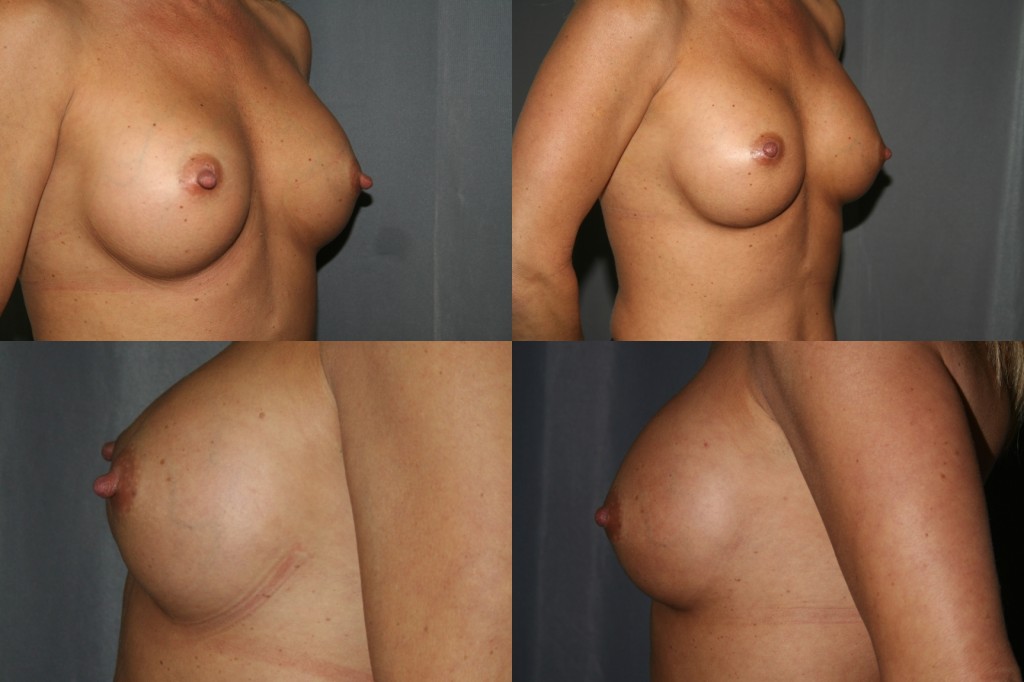Breast augmentation has become the most frequently performed cosmetic plastic surgery procedure. As a result, breast augmentation revision has also increased. This topic has been discussed previously under breast asymmetry and capuslar contracture. There are many reasons for breast implant revision surgery San Francisco; they can be divided into three main groups.
- Breast implant size – Perhaps the most common reason for breast implant revision surgery. The breast implant and pocket may both be fine, but there is a desire to change the size of the breast augmentation. By far, the most common change is to place larger breast implants, but reducing breast implant size and correcting asymmetry for size also are included in this category.
- Breast implant leak – Failure of the implant, and loss of the filling volume is another common reason for breast implant revision. Saline filled breast implants rapidly lose volume and it is clear that there is a problem. Silicone gel filled breast implants may require an MRI to determine if there is a leak. Regardless of the type of implant, if there is a leak, it needs to be replaced.
- Pocket problems – The pocket around the implant is normally lined with a thin soft scar. When the scar becomes too thick or too tight this is called capsular contracture. In its advanced stages, capsular contracture can lead to a firm, tight, immobile breast, which in severe cases becomes painful. On the other hand, if the scar is too soft and loose, the implants can move too much. This can lead to implants that are bottoming out (too low) or the implants may fall to the side when laying down (like natural large breast do).
Here is another example of breast augmentation revision surgery bay area. This patient presented to my Walnut Creek plastic surgery office. Overall, she was happy that she had breast implants, but she had several aspects that she wanted improved.
- Her bra would ride up onto the lower pole of her breast with exercise.
- Her implants had bottomed out.
- Her breast implants were asymmetric (more bottoming on the right).
- Her implants were a little small still.
- Her nipples were too prominent, noticed more after her primary breast augmentation.
- Her nipples were asymmetric.
The following procedures were discussed:
- Capsulorrhaphy – literally means capsule tightening. The lower pole of the capsule is closed to lift the implant higher on the chest. Capsulorrhaphy is also performed to move implants out of the armpits. Larger implants and weaker soft tissues increase the risk of implant malposition, and recurrence of the problem.
- Creation of an New Inframammary Fold (IMF) – This is a difficult procedure to get right, and it is worth finding a Board Certified Plastic Surgeon who has experience with this type of correction. The IMF is purposefully formed slightly higher than the desired result as there is almost always some stretching again after surgery. This procedure and capsulorrhaphy can both improve asymmetry. A defined IMF is important to keep the bra in the correct position and to allow the bra to support the breast properly.
- Breast Implant Exchange – Whenever breast augmentation revision is performed, it is worth considering whether to replace the implants. Implant volumes are most commonly increased during breast revision surgery. Sometimes the volumes are reduced and sometimes the volumes are adjusted to help compensate for asymmetry. The implants can also be exchanged between saline and silicone gel. As is often the case, a slightly larger implant was desired. Larger implants can increase the risk of bottoming out. Smaller implants will increase the reliability of the capsulorrhaphy and IMF repairs. Smaller implants are lighter, and less weight means a better chance for long term correction.
- Nipple Reduction – Generous nipples can be reduced in size. The scar lies in the crease at the base of the nipple and is very difficult to see.
- Periareaolar Breast Lift – The periareolar scar can be used to move the nipple/areaolar complex (nipple and the dark skin around it) in any direction. As with a breast lift, the scar goes around the areola. In this case, the right nipple is significantly higher than the left; however, since the patient was not really bothered by her nipple position, it was not fixed.

Breast Augmentation Revision with Nipple Reduction - Before (left) and After (right)
The previous implants were removed, a capsulorraphy was performed, additional work was done internally to form a new IMF, and new implants where placed via a periareolar scar (from 4 to 8 o’clock). The volume was increased from 300 to 350 cc’s using saline filled implants. In addition, the nipples were reduced with an incision that runs around its base. The nipple is still high on the right, and could be improved by further raising the breast implants. However, for the sake of the left breast, it is better to keep the implants in their current position. While this leaves the right nipple high, it avoids creating a low (sagging looking) nipple on the left.
Notice the improvement of the angle at the bottom of the breasts. It is no surprise that the bra was ridding up onto the breasts before surgery. After recreation of the IMF, it is higher, smooth and well defined.
Previous Post Next Post